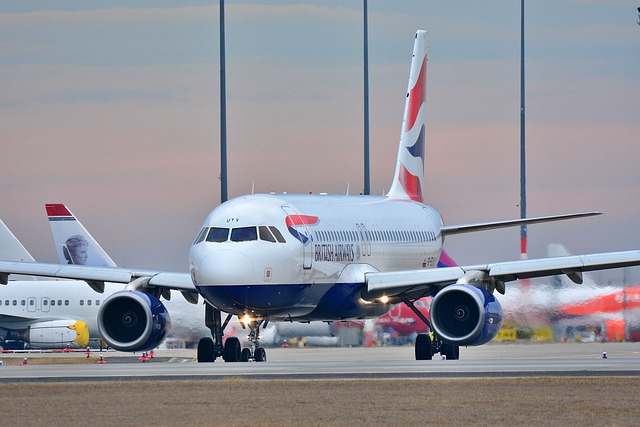How to Launch Your Aviation Career in 2025
Did you know the United States offers FAA-regulated training paths that can fast-track you into airline and airport careers quickly? Discover key certifications, job roles, and financing tips crucial for starting your exciting aviation journey with confidence.

Aviation Training Programs in the USA: Foundations of a Career in Aviation
FAA-Certified Training and Licensing Pathways
In the USA, aviation training adheres to Federal Aviation Administration (FAA) regulations to ensure certifications are internationally recognized. The typical progression of pilot licenses includes:
- Private Pilot License (PPL): The initial license permitting non-commercial flying.
- Commercial Pilot License (CPL): Allows pilots to be paid for flying; necessary for professional pilot roles.
- Instrument Rating (IR): Certifies pilots to operate aircraft in diverse weather conditions using instruments.
- Multi-Engine Rating (ME): Required to pilot aircraft with more than one engine.
- Certified Flight Instructor (CFI): Enables building flight hours by teaching; a common step before joining airlines.
- Airline Transport Pilot License (ATPL): The top certification for airline captains, demanding extensive experience and training.
Each certificate requires a mix of flight hours, written exams, medical clearance, and FAA practical testing.
Various Aviation Training Options in the USA
The USA provides multiple training formats tailored to different student needs:
- University-Affiliated Programs: Combine college degrees with FAA pilot certifications offering a comprehensive aviation education.
- Independent Flight Schools: Offer flexibility and may suit part-time or self-paced students.
- Airline Cadet Programs: Industry-supported tracks designed to train candidates from entry-level to cockpit roles, sometimes with financial assistance and employment placements.
Example: Airline Career Pilot Program by ATP Flight School
ATP Flight School’s Airline Career Pilot Program presents a structured training route with access to a large fleet and locations nationwide, including Houston and other US cities. The program facilitates advancement toward employment at major airlines like American, Delta, and United. Prospective students can learn more about this program via ATP Flight School’s official channels.
Roles and Training Paths in the Aviation Sector Beyond Piloting
Various Aviation Training-Related Careers
The aviation industry encompasses several training roles beyond flying:
- Flight Instructors: Certified pilots who teach student pilots and assist in building flight experience.
- Technical Trainers: Experts providing training on flight operations, aircraft systems, and safety procedures.
- Cabin Crew Trainers: Professionals responsible for training flight attendants in customer service and safety.
- Airport Operations Trainers: Personnel who teach airport security, ground handling, and operational practices.
- Aviation Training Managers and Curriculum Developers: Professionals who create and oversee training programs, course materials, and regulatory adherence.
Qualifications for Aviation Training Roles
- Flight instructor positions generally require a Commercial Pilot Certificate or Airline Transport Pilot Certificate.
- Flight hour requirements usually start at 250 hours for commercial pilots and 1,500 hours for airline transport.
- Effective communication, organization skills, and up-to-date knowledge of aviation safety and operations are important.
- A high school diploma is the minimum education; some roles may require a bachelor’s degree.
Pathways to Careers at Airports and Airlines in the USA
Training and Certification Considerations
Candidates aiming for airport or airline operations roles typically complete FAA-approved training in areas like aircraft handling, security procedures, customer service, or aviation management. English proficiency at ICAO Level 4 or higher and medical fitness are often required.
Exploring Airport & Airline Work Roles
- Positions include ground operations, ramp services, passenger assistance, and airport security.
- Additional training may be available via local community colleges or airport authority programs offering specialized courses.
- Subsidized or affordable aviation-related training might be available through workforce development centers or community initiatives.
Financial Aspects of Flight Training in the USA
Cost Considerations
Flight training costs vary depending on:
- Type of flight school (university-affiliated, independent, or cadet program)
- Number of flight hours and aircraft types used
- Desired certification level (from PPL to ATPL)
Financing and Loan Information
- Some flight schools provide access to dedicated student loan programs, including lenders like Sallie Mae.
- Prospective students should investigate scholarships, financial aid, and loan options before enrolling to manage expenses wisely.
Choosing a Flight School: Important Factors to Consider
- Certification Status: Confirm the school holds FAA Part 61 or Part 141 certification; Part 141 offers a structured curriculum.
- Instructor Experience: FAA-certified instructors with teaching experience enhance training quality.
- Fleet and Facilities: Access to modern, well-maintained aircraft and simulators supports effective training.
- Location and Weather Conditions: Reliable flying weather reduces training interruptions.
- Partnerships with Airlines: Schools with airline affiliations may improve job placement prospects.
- Support Services: Visa assistance for international students and financing options are important considerations.
Summary for Aviation Career Seekers in 2025
- The USA offers FAA-regulated aviation training programs at all career stages.
- Programs like ATP Flight School’s Airline Career Pilot Program provide organized pathways leading to job opportunities with major airlines.
- The aviation field includes roles beyond pilots, including various training-related specializations.
- Jobs in airport and airline operations require appropriate training and certification, with multiple entry routes available.
- Flight training is costly but financing options exist; careful financial planning is recommended.
- Selecting an FAA-approved flight school that fits your career goals supports progress in airline and airport careers.
Those interested in aviation professions in 2025 should examine FAA-approved training programs, consider various career pathways, understand certification and training demands, and evaluate financial factors carefully to prepare for opportunities in the US aviation industry.
Sources
- ATP Flight School - Airline Career Pilot Program
- Flight School in USA: Everything You Need to Know in 2025
- Find Aviation Training Jobs
Disclaimer: All content, including text, graphics, images and information, contained on or available through this web site is for general information purposes only. The information and materials contained in these pages and the terms, conditions and descriptions that appear, are subject to change without notice.




